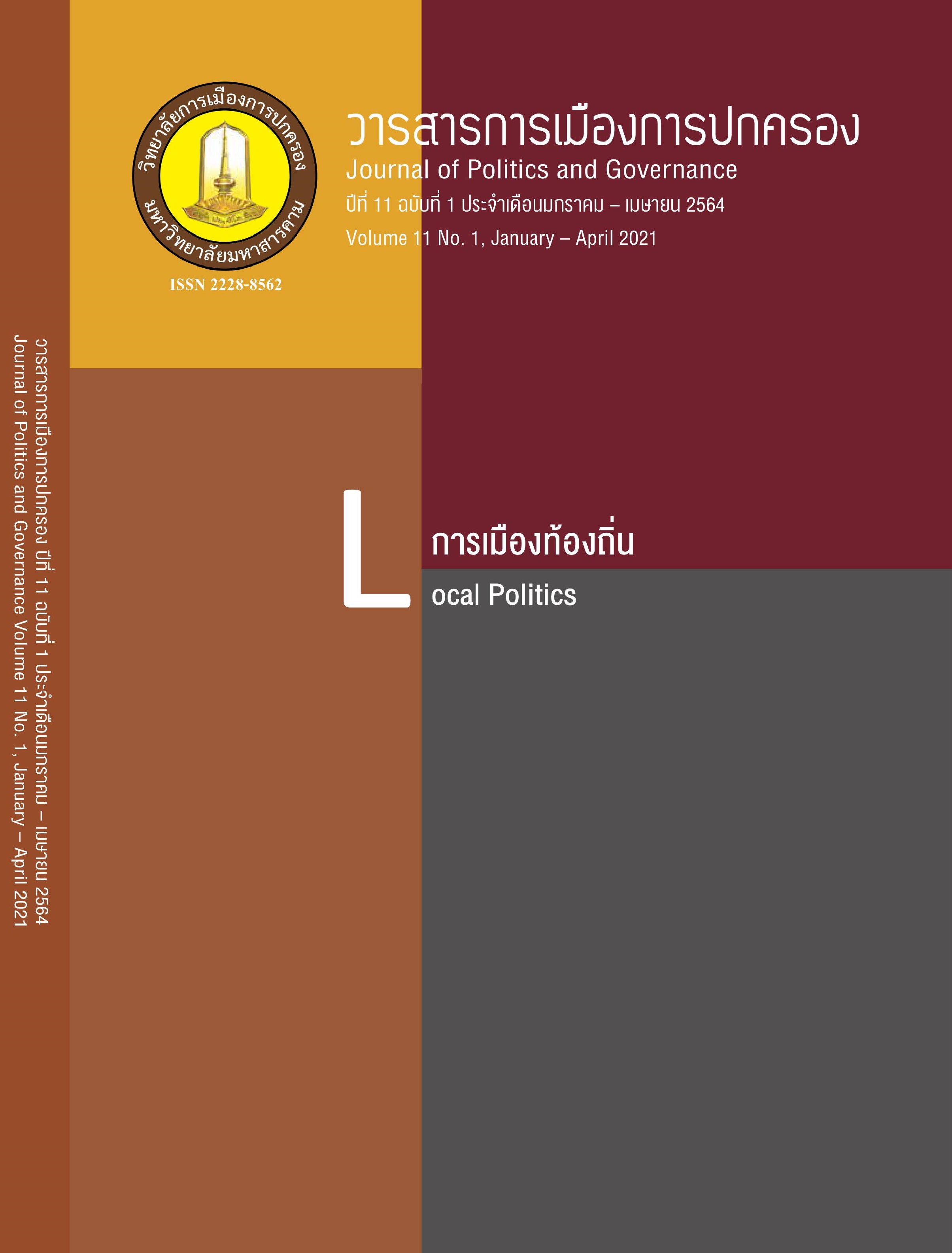The Roles of Organizations of Disabled People and Government Agencies on the Disability Right of Access to Public Transportation: A Case Study on the Right of Access to Low-Floor Bus
Main Article Content
Abstract
This research has three objectives including, firstly, to study the role of organizations of disabled people on their right to access low-floor buses, secondly, to study the role of government agencies in the provision of low-floor buses, and lastly, to suggest guidelines for improving the role of government agencies on the issue of access to the rights of the disabled to use services of government agencies. This research uses qualitative research methods. It includes in-depth interviews with the 6 key informants including Mr. Suporntum Mongkolsawadi, Mr. Udomchok Churat, Mr. Theerayut Sukhonthawit, Mr. Vorayut Kitkool, Mr. Vansao Chaiyakul, and Mrs.Apanee Mitthong, analysis of relevant documents, and searching relevant information from the internet. The results of the research show that the organizations of disabled people were trying to support the government to provide low-floor buses through various movements. While the government agencies, especially the Bangkok Mass Transit Authority (BMTA), had ignored the needs of people with disabilities and trying to support the high-floor buses, which were the traditional buses. These things have occurred especially in the period of the Yingluck Shinawatra government. However, after the coup in 2014, General Prayut Chan-ocha demonstrated attention to the needs of people with disabilities by supporting low-floor buses. That was the reason to have many low-floor buses in Bangkok nowadays. As for the suggestions for government agencies, it is necessary to understand people with disabilities and their rights in the dimension of being part of citizenship. They should not create distinction, differentiation or reinforce public policy discrimination against people with disabilities.
Article Details
References
น้อมจิตต์ นวลเนตร์ และ สิริรักษ์ ภาภิรมย์. (2549). การสำรวจสิ่งอำนวยความสะดวกสำหรับคนพิการในเขตเมืองขอนแก่น. วารสารวิทยาลัยราชสุดาเพื่อการวิจัยและพัฒนาคนพิการ, 2(1), 26-37.
เนตรชนก สุนา. (2556). เจตคติของคนพิการต่อการเสริมสร้างพลังอำนาจ. วารสารวิทยาลัยราชสุดาเพื่อการวิจัยและพัฒนาคนพิการ, 9 (12), 4-21.
ยุทธพร อิสรชัย. (2544). อินเตอร์เน็ตกับการเมืองไทย. (วิทยานิพนธ์รัฐศาสตรมหาบัณฑิต). จุฬาลงกรณ์มหาวิทยาลัย, กรุงเทพฯ.
Acheson, N. (2001). Service Delivery and Civic Engagement: Disability Organizations in Northern Ireland. Voluntas: International Journal of Voluntary and Nonprofit Organizations, 12(3), 279-283.
Bernal, V. & Roca, B. (2016). Disability, social movements and radical theory: An anthropological approach. Anthropological Notebooks, 22(2), 79-92.
Bregain, G. (2016). Comparative study of two protest marches for disabled people’s rights (Spain 1933-Bolivia 2011). Moving the Social, 56, 115-140.
British Council of Organisations of Disabled People. (1997). The Disabled People’s Movement. Derbyshire: Bailey & Sons. Retrieved from https://disability-studies.leeds.ac.uk/wp-content/uploads/sites/40/library/BCODP-workbook4.pdf
Fletcher, A. & O’Brien, N. (2008). Disability rights commission: From civil rights to social rights. Journal of Law and Society, 35(4), 520-550.
Heng-hao, Chang. (2006). The disability rights movement in Taiwan: Modernity, civil society and politics of difference. Doctor of philosophy, University of Hawai’i.
Power, A., Lord, J. & de Franco, A. (2013). Active Citizenship and Disability: Implementing the Personalisation of Support. New York: Cambridge University Press, 18-26.
Schedin, H. (2017). Accessibility to power: Framing of the disability rights movements in India and Nepal. Disability, CBR & Inclusive Development Journal, 29(3), 115-126. doi: 10.5463/DCID.v29i3.642
Schur, L., Kruse, D. & Blanck, P. (2013). People with Disabilities: Sidelined or Mainstreamed? New York: Cambridge University Press.3, 226-229.
Stoll, J. (2015). The German disability movement as a transnational, entangled new social movement. Moving the Social, 53, 63-86. doi:10.13154/mts.53.2015
Vanhala, L. (2009). Disability Rights Activists in the Supreme Court of Canada: Legal Mobilization Theory and Accommodating Social Movements. Canadian Journal of Political Science / Revue Canadienne De Science Politique, 42(4), 981-1002. Retrieved from www.jstor.org/stable/27754540
Van Trigt, P. (2015). A blind spot of a guiding country? Human rights and Dutch disability groups since 1981. Moving the Social, 53, 87-102. doi: 10.13154/ mts.53.2015
Waldschmidt, A., Karacic, A., Sturm A., & Dins, T. (2015). “Nothing about us without us” Disability rights activism in European countries- A comparative analysis. Moving the Social, 53, 103-138. doi: 10.13154/mts.53.2015


